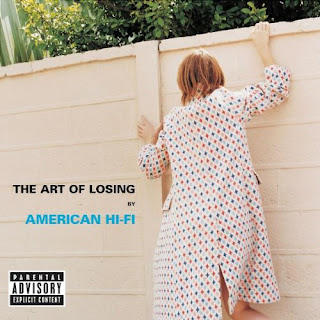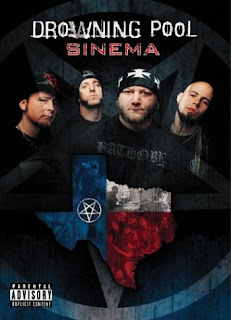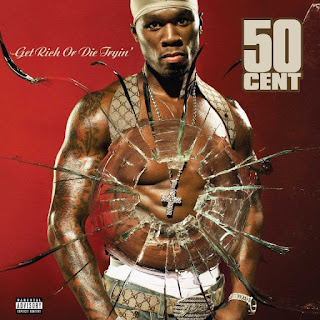Then I heard news of the death of Levi Stubbs, lead singer of the Four Tops. With a voice that spoke directly to God, Stubbs sang some of my favorite Motown hits. I had a copy of the Four Tops’ Anthology album when I first moved out on my own back in ‘75 at the age of eighteen, a big blue three-record affair. It was the first disc, sides one and two, that provided a fitting soundtrack to my teenage romantic woes, Stubbs delivering timeless vocal performances on songs like “Bernadette,” “Ask the Lonely,” “7 Rooms of Gloom” and the biggest and baddest of them all, “Standing In the Shadows of Love.”
Thinking of the affect that Levi Stubbs and the Four Tops had on my own life and direction as a writer, and an adult, I listened again to Kempner’s wonderful Motown tribute, “Shadows of Love.” Beginning with a solitary drumbeat, a twangy, echoed guitar chimes in, leading to Kempner’s sad vocals. Describing perfectly the lonesome wakefulness of the wandering lover, Kempner sings “I turn on the radio/Maybe a little rock ‘n’ roll to save my soul/But push it seems has come to shove/For me and Mr. Levi Stubbs/We’re waiting for the heartaches to come/Standing in the shadows, standing in the shadows, standing in the shadows of love…”
Like Stubbs, Kempner is a romantic at heart, a musician and songwriter that believes in the redeeming qualities of rock ‘n’ roll and the undying power of love. As the song unravels, the singer describes the uncertainty and doubt of the freshly-heartbroken man, turning…much like I did thirty years ago…to the Four Tops for consolation from the anguish and pain of love lost. Musical trends may come and go, but some things reign eternal: the vagaries of love and greatness of Levi Stubbs are two of them.
Scott Kempner holds a special place in the hearts of those of us that genuflect before the altar of the one true rock ‘n’ roll. As both the swinging rhythm guitar-slinger with cult faves the Dictators and the primary songwriter and guitarist with roots-rock phenoms the Del-Lords, as well as across a pair of solo albums, Kempner has continued to pursue a creative vision of honest, hard-rocking music combined with smart, populist, working class blues-styled lyrics. Kempner’s solo debut, 1992’s Tenement Angels, was an expected treat, but it doesn’t hold a candle to the brightly-burning heartache the artist displays with Saving Grace.
 |
| The Del-Lords 1988 by Jeffrey Scales, courtesy Enigma Records |
In fact, I’ll go out on a limb here and claim, without qualification, that the songs making up the first half of Saving Grace represent the most effective opening one-two-three-four-five punch that has been waxed since Springsteen’s Born To Run. Obsessed with love, but damaged by romance, the album is somewhat of an autobiographical diary of Kempner’s own recent ups-and-downs in life and love. There are, literally, no bad songs to be found anywhere on Saving Grace, Kempner imbuing his songs with a tragic dignity, mixing up a roots-rock, rockabilly, soul, blues, and folk music soundtrack in the creation of what is, without a doubt, the year’s best rock album.
Opening the album, “Beyond the Pale” starts with a Western-styled guitar strum, shimmering like an Arizona desert sunset while Kempner’s gentle vocals rise above the crimson hues. As the song’s instrumentation swells towards a crescendo, shades of a second, trembling guitar rise above the chimes, with a whimsical accordion adding its voice. The song’s message of hope in the face of widespread indifference sets the stage for the rest of Saving Grace, an album populated by star-crossed lovers and dreamers with their eye on the heavens.
“Baby’s Room” sounds like it could be a long-lost Del-Lords track circa Lovers Who Wander, with a similar musical structure that is part Dion and part Gram Parsons. A dark-hued song with twangy, Duane Eddy-styled guitars and low-register vocal harmonies, Kempner jumps across the surprising bridge with a flashpoint guitar solo and a bit of vocal gymnastics. The ‘60s-styled “Love Out of Time” is a wonderful tale of unrequited love, Kempner’s vocals simply gorgeous above a forcefully strummed rhythm guitar and swelling instrumentation. A rich, surf-happy lead guitar kicks in as Kempner’s voice grows louder and more passionate, the song finally spent in a wave of pent-up frustration.
The haunting guitarwork that intros “Saving Grace” sets the foundation for the song’s brilliantly poetic imagery, Kempner’s mournful, pleading vocals asking for just one more chance. It’s another mesmerizing moment in an album seemingly punctuated with such, Kempner’s passionate vocals-n-guitar weaving a soulful tapestry of emotion. Kempner quickly changes pace with the raucous “Stolen Kisses,” the song’s blistering six-string attack and shouted vocals hitting your ears like a cross between the Del-Lords and Jason & the Scorchers, two bands that were kissing cousins chasing the ghosts of Hank Williams in the first place. Behind a choogling rhythm, Kempner lays down his tale of love and betrayal atop a loud-and-proud sandpaper riff, launching into an incendiary solo
The tragic, foreboding “Blame Me” opens with a delicate guitar intro and Kempner’s deceptively soft vocals before tumbling into a tale of desperation and heartache so damn blue that your soul aches just listening to it all. By mid-song, the guitarist’s instrument has become possessed, wailing and crying and screaming like a caged beast, channeling the pain and anger and lovelorn with a slowly-escalating solo that strikes at the heart of the song like a dagger. Kempner’s lyrics are sheer dark beauty, but when accompanied by his masterful guitarplay, the result is pure magic.
Released almost four months ago, Saving Grace has all but disappeared from the musical landscape, remaining only in the minds and on the stereos of the diehard fans. Don’t let this wonderful album fall into the indignity of obscurity. Buy it. BUY IT NOW! Buy or die, Bunkie, lest the angry gods of rock ‘n’ roll strike you down with a punishment straight out of your most frightening nightmares…or worse yet, make you listen to another Britney Spears album…it’s entirely your choice. (2 Minutes 59 Records, released May 1st, 2008)
Review originally published by the Trademark of Quality (TMQ) blog, 2008















